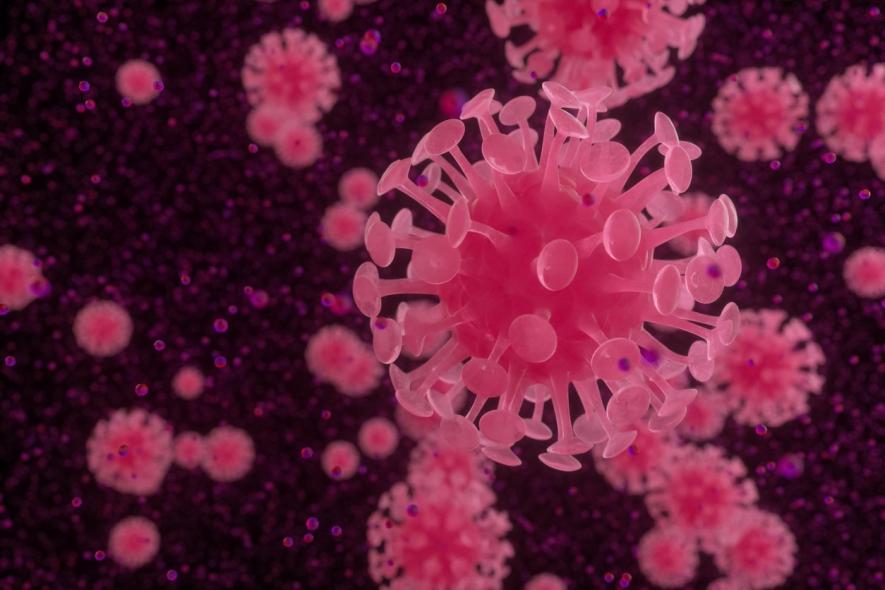Mutations Undergone by Coronavirus Tracked, 3 Lineages Found: Study

Image Courtesy: Deccan Herald
London: Scientists have reconstructed the early "evolutionary paths" of COVID-19 as the infection spread from Wuhan, out to Europe and North America, an advance that sheds light on the mutations undergone by the novel coronavirus since its origin.
According to the researchers, including those from the University of Cambridge in the United Kingdom, there are three distinct "variants" of COVID-19, consisting of clusters of closely related lineages, which they labelled 'A', 'B' and 'C'.
By analysing the first 160 complete virus genomes to be sequenced from human patients, the study, published in the journal, PNAS, mapped some of the original spread of the new coronavirus, SARS-CoV-2, through its mutations into the lineages.
"There are too many rapid mutations to neatly trace a COVID-19 family tree. We used a mathematical network algorithm to visualise all the plausible trees simultaneously," said geneticist Peter Forster, lead author of the study from the University of Cambridge.
"These techniques are mostly known for mapping the movements of prehistoric human populations through DNA. We think this is the first time they have been used to trace the infection routes of a coronavirus like COVID-19," Forster said.
The scientists used data from virus genomes sampled from across the world between December 24, 2019 and March 4, 2020.
According to Forster and his team, the closest type of COVID-19 to the one discovered in bats -- type 'A', the "original human virus genome" -- was present in Wuhan, but surprisingly was not the city's predominant virus type.
They said mutated versions of 'A' were seen in Americans reported to have lived in Wuhan, and a large number of A-type viruses were found in patients from the US and Australia.
Wuhan's major virus type, 'B', was prevalent in patients from across East Asia but the variant didn't travel much beyond the region without further mutations.
Based on this, the scientists said there could have been a "founder event" in Wuhan, or "resistance" against this type of COVID-19 outside East Asia.
The 'C' variant, they said, is the major European type, found in early patients from France, Italy, Sweden and England.
It is absent from the study's Chinese mainland sample, but seen in Singapore, Hong Kong, and South Korea.
The study also suggested that one of the earliest introductions of the virus into Italy came via the first documented German infection on January 27, and that another early Italian infection route was related to a "Singapore cluster".
According to the scientists, the methods used in the study could be applied to the very latest coronavirus genome sequencing to help predict future global hot spots of disease transmission and surge.
"Phylogenetic network analysis has the potential to help identify undocumented COVID-19 infection sources, which can then be quarantined to contain further spread of the disease worldwide," Forster said.
Variant 'A', the study noted, is most closely related to the virus found in both bats and pangolins, and can be described as "the root of the outbreak".
Type 'B', it said, is derived from 'A', separated by two mutations, then 'C' is in turn a "daughter" of 'B'.
The localisation of the 'B' variant to East Asia could result from a "founder effect", the scientists said.
In this phenomenon, there is a loss of genetic variation when a new population, in this case of the virus, is established by a very small number of individuals from a larger population, they explained.
Forster said there could be another explanation for this.
"The Wuhan B-type virus could be immunologically or environmentally adapted to a large section of the East Asian population. It may need to mutate to overcome resistance outside East Asia. We seem to see a slower mutation rate in East Asia than elsewhere, in this initial phase," he explained.
"The viral network we have detailed is a snapshot of the early stages of an epidemic, before the evolutionary paths of COVID-19 become obscured by vast numbers of mutations. It's like catching an incipient supernova in the act," Forster added.
Get the latest reports & analysis with people's perspective on Protests, movements & deep analytical videos, discussions of the current affairs in your Telegram app. Subscribe to NewsClick's Telegram channel & get Real-Time updates on stories, as they get published on our website.
























